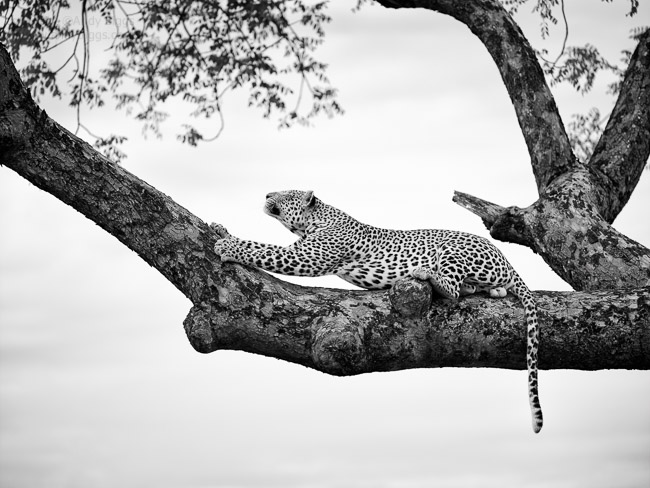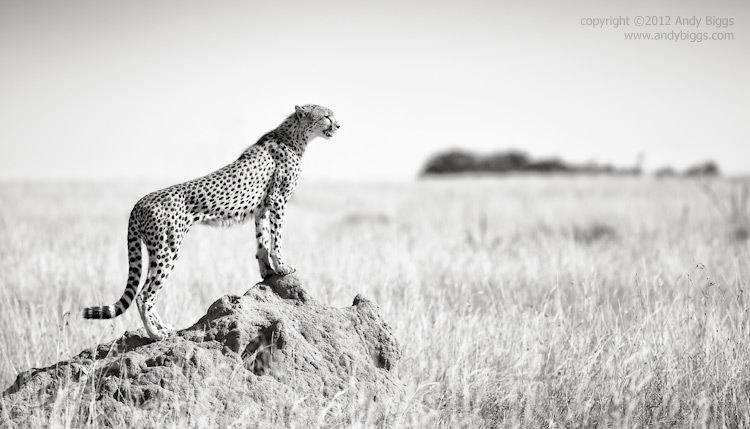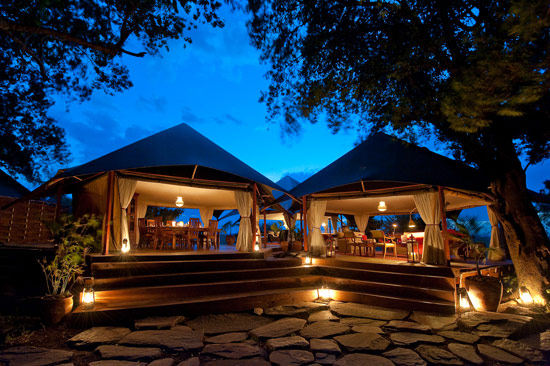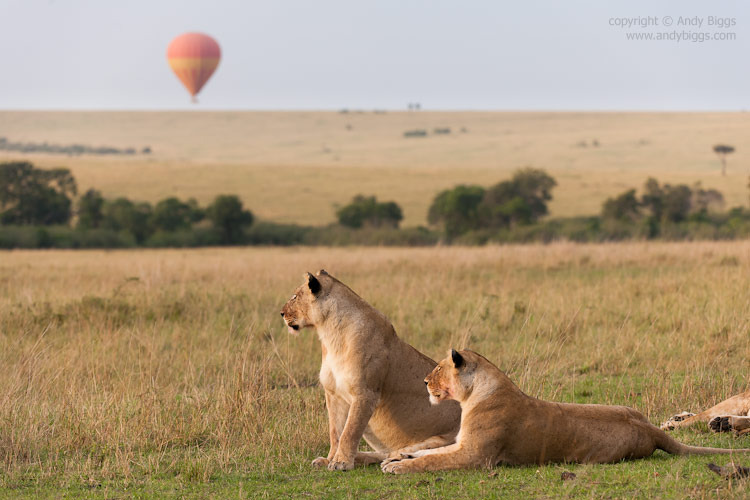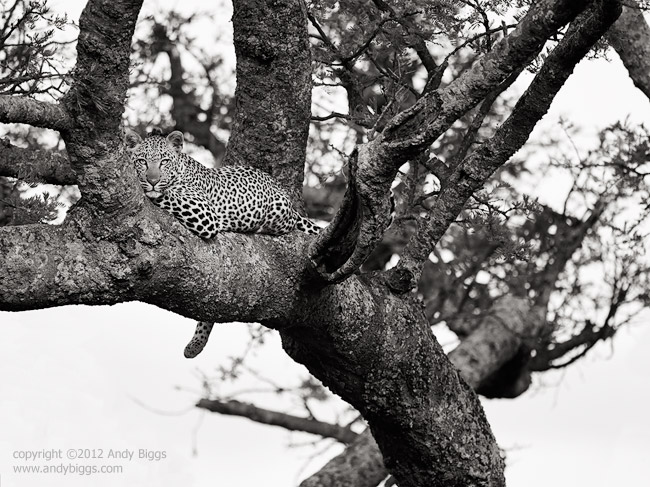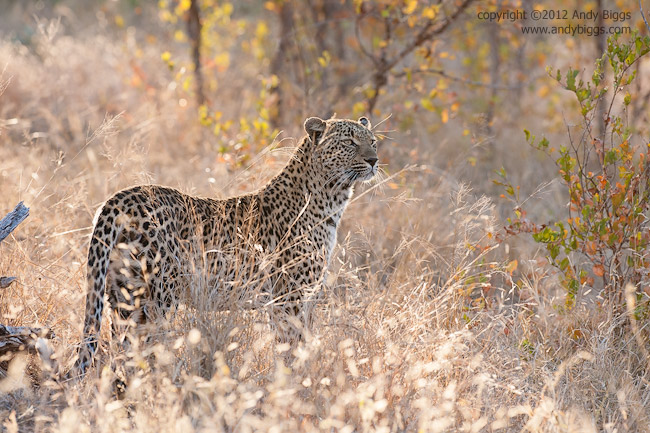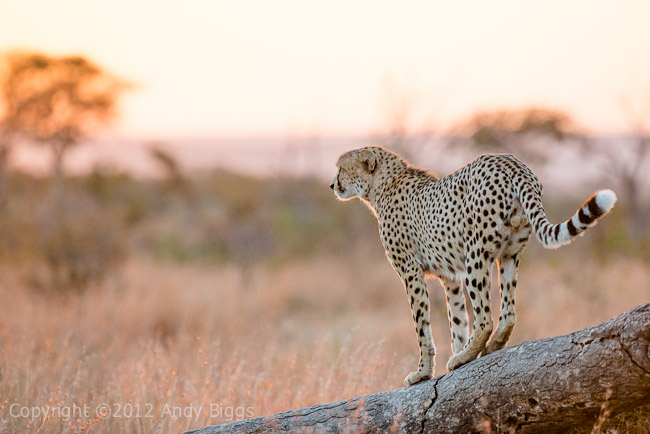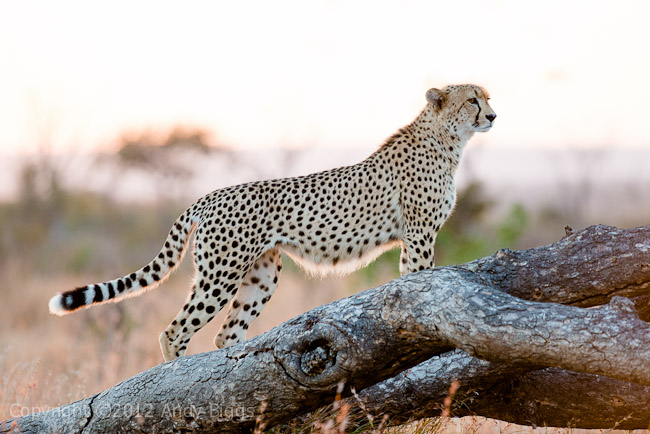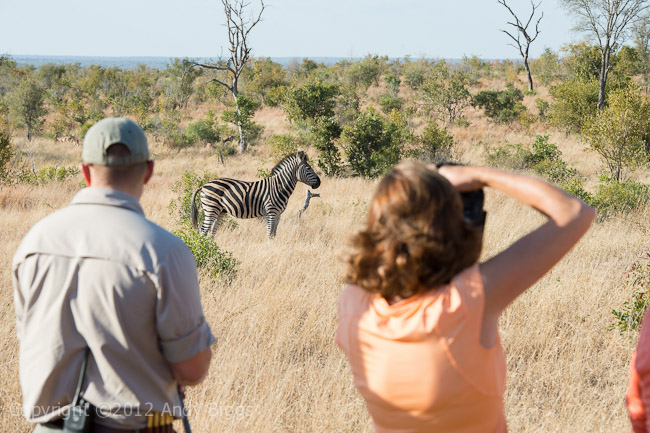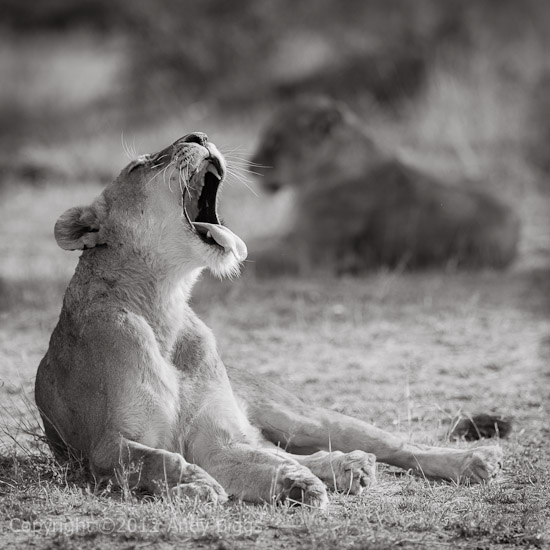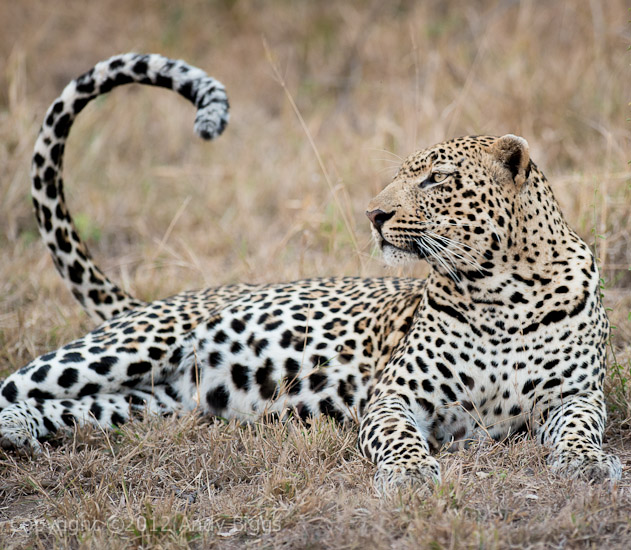This morning we drove in one huge circle around the edge of the Singita area and we eventually picked up the tracks of 3 adult female lionesses and a single adult male. We knew direction and approximate time of the tracks, so it was a matter of time before we were able to find them. We had them walking down a road, and from a photographic standpoint I don’t prefer to have man made objects in my photographs, so we positioned our Land Rover parallel to the road so we could photograph the walking lions without any hint of a road. What made the composition better was that there was tall grass in the foreground, and that created depth to the scene. The challenge with the setup was how to focus on the lions, as the foreground grass was the only thing we could get a clean autofocus point on. Not to fret, as it is easy to tweak the focus manually and use an f-stop to make sure we had enough depth of field just in case of error. I recommended f/8 to f/14, and it seemed to work out.
Eventually the lions took a long drink, and the only way we could position the vehicle was to have them looking to the side, parallel to us. Since lions don’t like mud, we had a good idea where they would eventually place themselves for a drink. Almost the entire edge of the water was covered in mud, so it made it easy to predict where the lions would drink from.
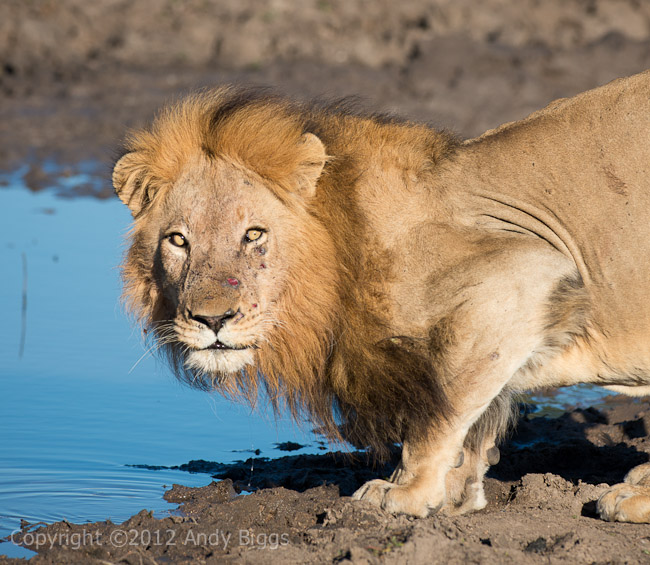
Lion At The Waterhole
Nikon D800, 300mm f/2.8 VRII, 1/1600 @ f/5.6, ISO 400
In the afternoon we had an excess of riches. We ‘had’ to decide between mating leopards (the same we had photographed a day ago) and the mother leopard and her two cubs. Both sightings were within 500 meters of each other, so we just went to the location of the mating leopards first. The leopards weren’t as easy to photograph this time, due to the area of thick bush they were in, but I used the opportunity to shoot video just so I could have audio of the affair. After a 6 matings we were anxious to get ourselves to Hlabankuzi and her two cubs, so we drove out and headed towards the Sand River’s edge.
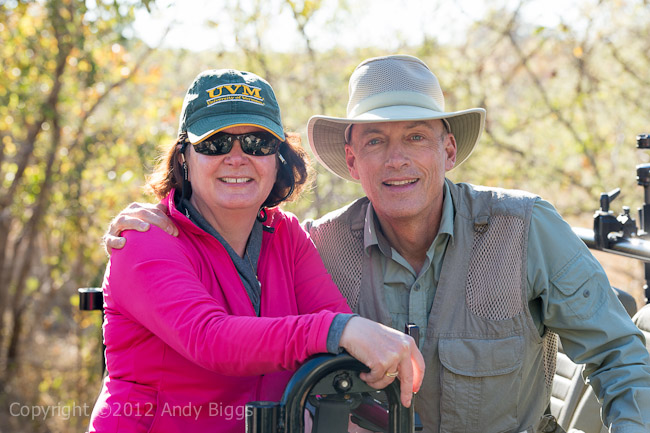
Renee and Deven
Nikon D4, 70-200mm f/2.8 VRII, 1/200 @ f/7.1, ISO 400
On the way to the river we noticed some tracks on the road that were out of place, and eventually figured out that Hlabankuzi had made a kill near the road and had dragged the carcass down to the sandy part of the river. Score! We found her with her cubs on the carcass, but they were in an extremely dense bush and we couldn’t see much. We waited until one of them appeared, and eventually Hlabankuzi dragged the remaining impala carcass down the road and up into a huge jackalberry tree.
The light had already faded, but we sat and watched one of her cubs climb up into the tree and enjoy the meal by herself. The irony of the moment was that the kill was sitting on top of a leopard orchid, which was growing wild on top of a low branch in the tree. A leopard on top of a leopard orchid. Poetic. I pushed the D4 to ISO 12,800 before we needed to leave them to dine. Hlabankuzi had left the jackalberry tree to go and fetch cub number two, and we needed to respect the rule that nobody should spend time with a leopard cub without the presence of the mother, so we drove back to camp in the dark. On the way back we saw yet another leopard and 2 more cubs, so today we had seven unique leopards in the span of only one hour. What an awesome way to end the last full day of safari for my safari group.
Tomorrow I will have to say goodbye to my group, as I have another safari group arriving. I know we are going to have another 8 days of fantastic sightings, even if we don’t see a single leopard, lion or cheetah. The general game has been excellent, and I anticipate more of the same in the week ahead.
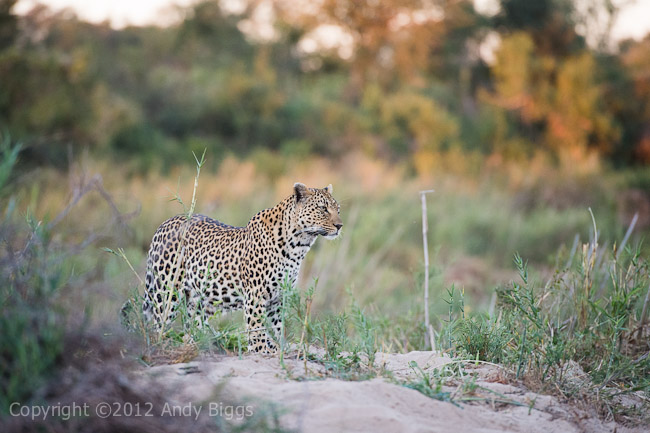
Ravenscourt Female Leopard
Nikon D4, 70-200mm f/2.8 VRII, 1/1250 @ f/4, ISO 5000

Ravenscourt Female Leopard and One of Her Cubs With a Kill
Nikon D4, 70-200mm f/2.8 VRII, 1/1250 @ f/3.2, ISO 6400

Leopard Cub
Nikon D4, 70-200mm f/2.8 VRII, 1/100 @ f/2.8, ISO 12,800, hand-held
Camera bags on this safari are sponsored by Gura Gear, which I started in 2008. Check us out. We make the best camera bags on the planet.
Some of the gear on this safari has been provided by Borrowlenses.com. I rely on borrowlenses.com for both my own needs as well as my safari travelers’ needs. When we need big lenses, cameras or anything else photographic, we turn to borrowlenses.com to help out. They are the best resource in the industry for traveling photographers.
 Monday, December 23, 2013 at 01:54PM
Monday, December 23, 2013 at 01:54PM 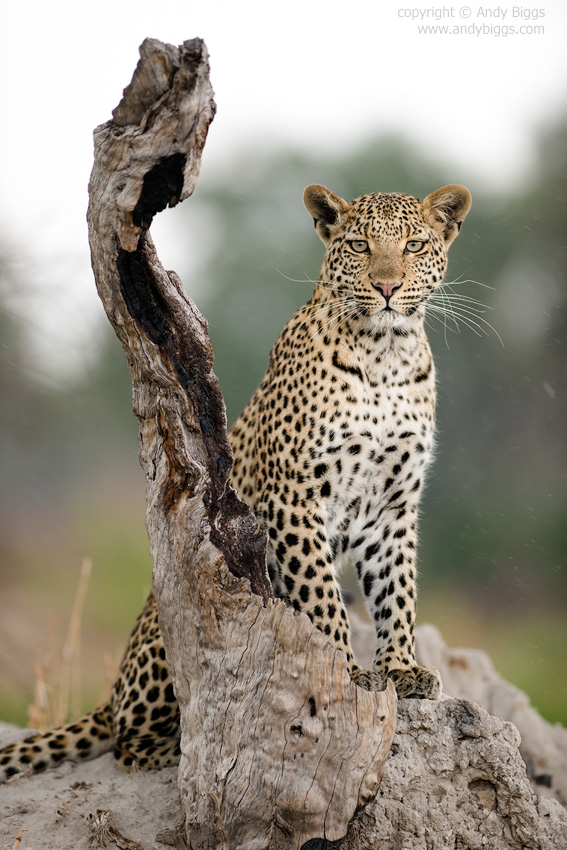
 Botswana,
Botswana,  Leopard,
Leopard,  Okavango Detla,
Okavango Detla,  africa in
africa in  Photo of the Day
Photo of the Day 


